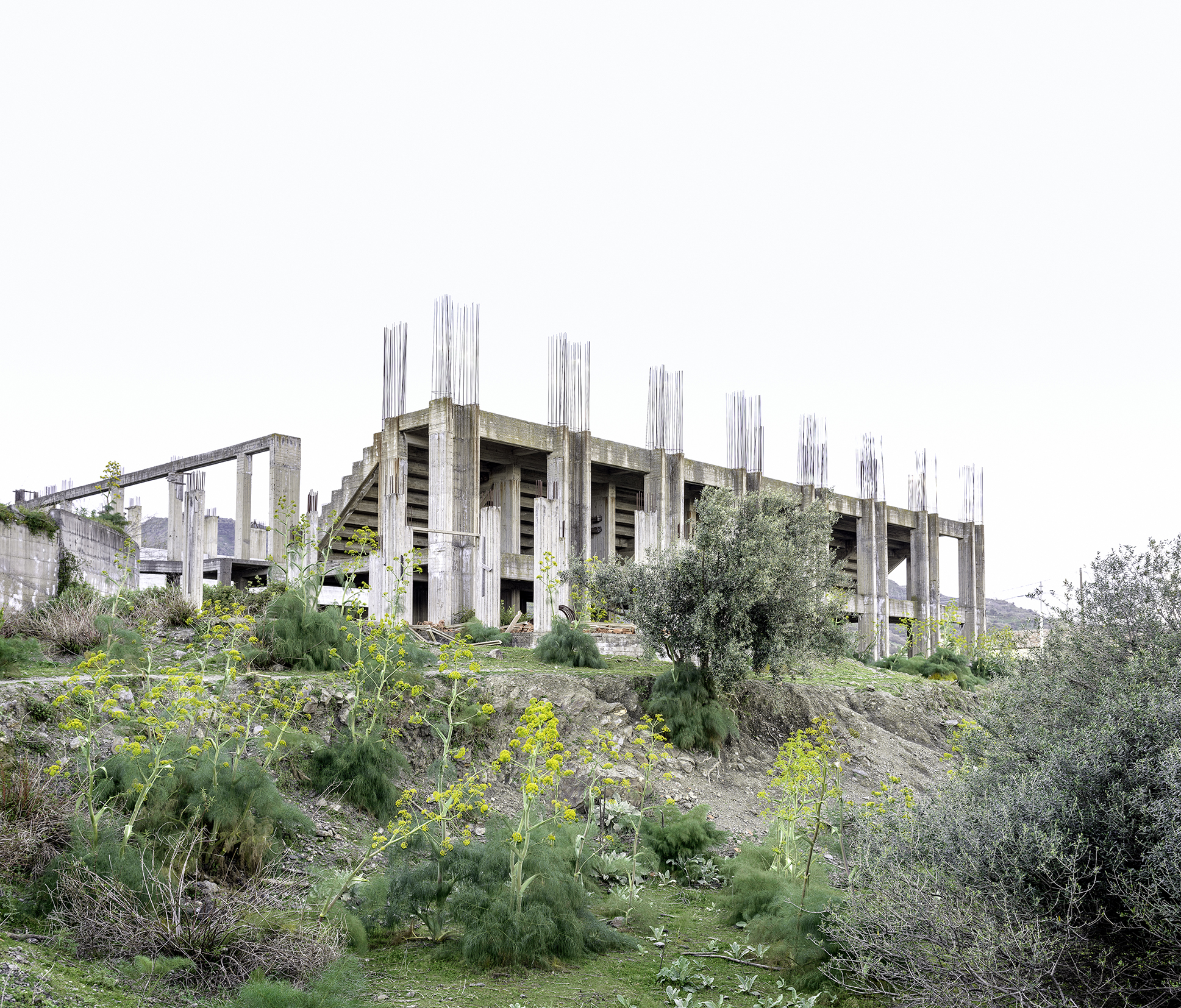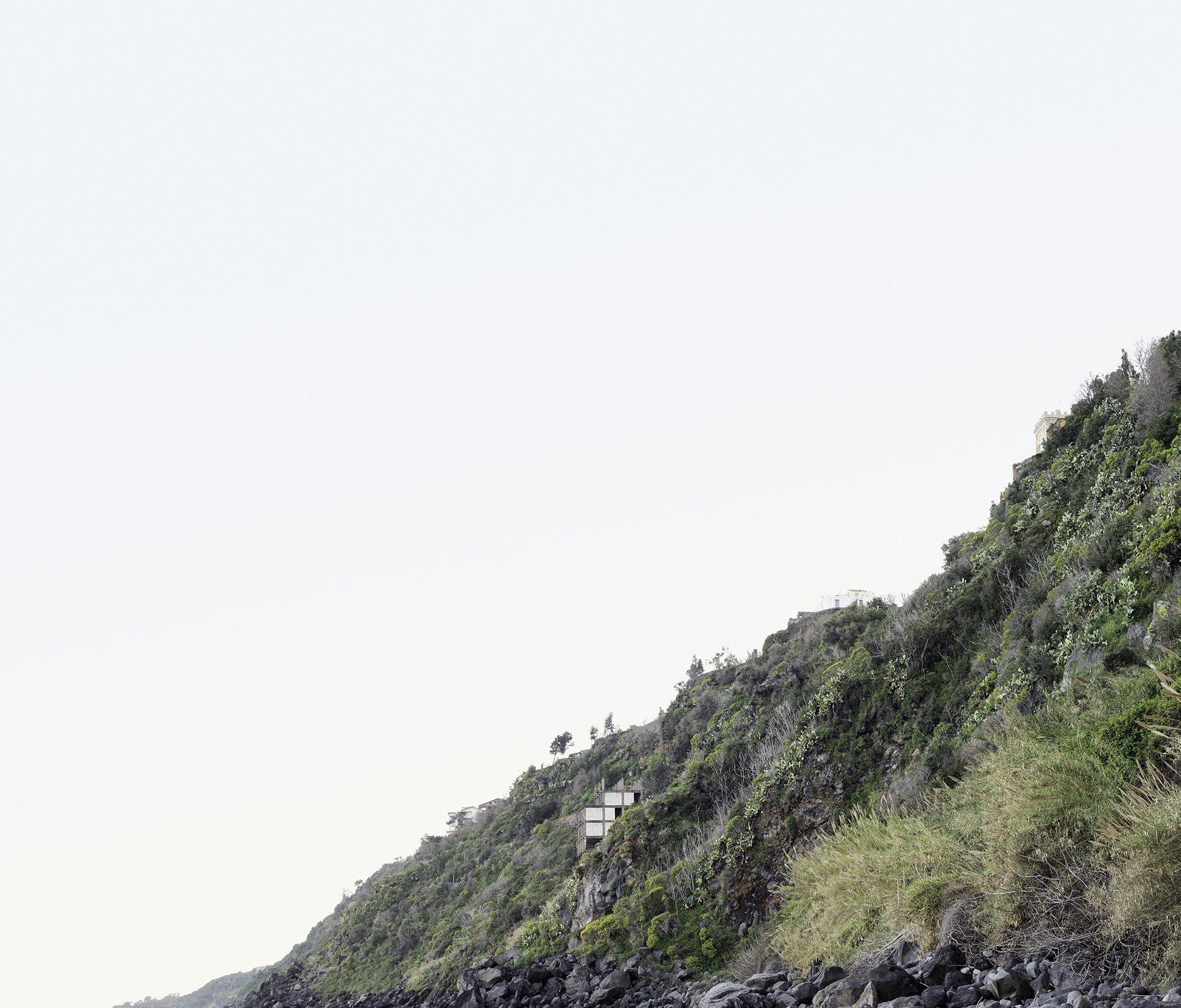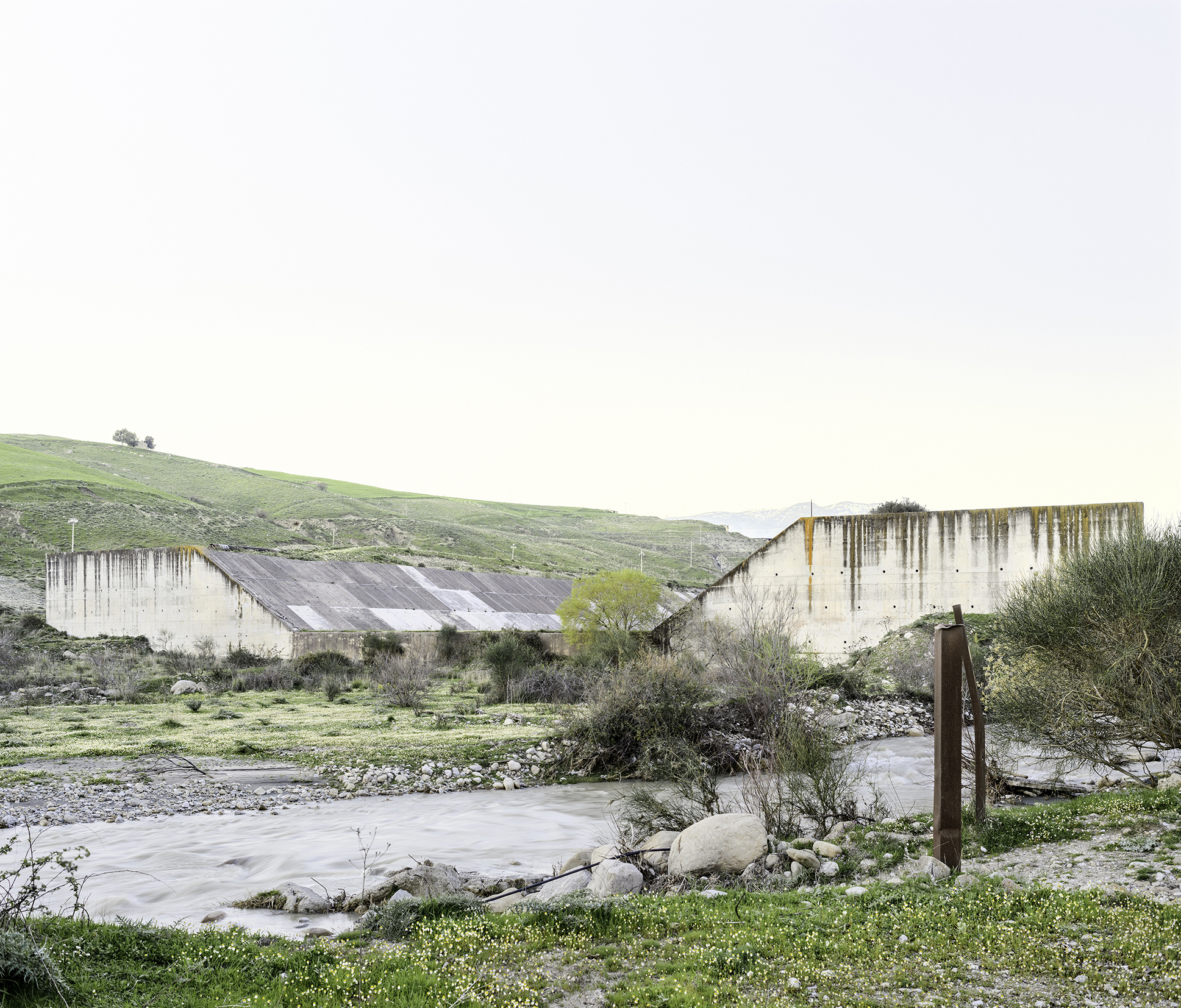Empire of dust [2015]
Série de 18 photographies réalisée en Italie du sud, dans les régions de Sicile, de Calabre, de Basilicate et des Pouilles.
Tirages pigmentaire, Papier RC - 130 x 111 cm - Dibond 2mm/ Caisse américaine.
Series of 18 photographs made in southern Italy, in the regions of Sicily, Calabria, Basilicata and Puglia.
Pigment prints, RC paper - 130 x 111 cm - Dibond 2mm / framing american box.
ENGLISH TEXT
Empire of dust has been realized in southern Italy, in regions of Sicily, Calabria, Basilicata and Puglia, where financial crises and embezzlement have made of the incompleteness, an architectural aesthetics.
Through this series, Amélie Labourdette tries jointly through an «archeology of present» to reflect the contemporary history by the yardstick of these unfinished architectures, while invoking the viewer’s imagination so that there unfolds “a variant of the world”.
Concrete skeletons of major projects remained pending, of unfinished buildings, recurring patterns of our time affected by socio-economic upheavals, become also, because of their incompleteness, interstitial spaces of indeterminacy, conducive to a photographic quest, exploring the possibilities of a singular reinvestment of the world: they are proving to be, spaces and indefinite forms that have, due to their incompleteness, a «becoming-other» that the design of the initial project had dedicated them.
These indefinite forms, between upcoming ruins and potential sculptures, are drawing the figure of a strange present between dystopia and utopia, contemplating its own suspended space : a temporal interregnum between, an after the «disaster» and a revival of history that builds a new poetic area, over which hovers the specter of the end of a certain world.
« The moment of capture stretches until become an ethereal period, creating a sense of unreality: the static light, the lack of shadows realize a shift in temporal stratification of the landscape that contains preludes the past, evidence of this, and stigma of the future. » 1
All these photographs form thus a space of imaginary speculation, inviting the viewer to weave improbable links between different referential and memory layers of history: from the school of Düsseldorf to the minimalist sculptures of the 60s, or else to the monumental interventions of Land Art, but also from the ruins of the German romantic painting to the «forward-looking ruins» of the science fiction novels, such as Earth Abides of G.R. Stewart, describing a post-human era, where nature gets over on human constructions.
« Is that these ruins are for Amelie Labourdette, «holes in the real», gates, ways to access time itself: in front of these, we become archaeologists of our time, we wear, in the manner of astronauts of The Planet of the Apes, a look back at our present, our future too. » 2
« Suspended in a floating temporality, these landscapes reflect the depths a familiar human history, made of hubris and vanity, entropy and inevitable return to dust. » 3
Notes:
1 - Press Kit Exibition Galerie RDV, Léa Cotart-Blanco.
2 - REVUE 303 N°140 « Ruines et vestiges »: Carte blanche to Amélie Labourdette, text : Julien Zerbone
3 - REVUE 303N°138 Design: Chronicles, Contemporary Art, Éva Prouteau, pages 80-81.
TEXTE FRANÇAIS
Empire of dust est une série de photographies réalisées au sud de l’Italie où les crises et détournements financiers ont fait de l’inachèvement une esthétique architecturale (dans les régions de Sicile, de Calabre, de Basilicate et des Pouilles).
Dans cette série, Amélie Labourdette tente conjointement à travers une “archéologie du présent“, de réfléchir notre époque contemporaine à l’aune de ses architectures inachevées, tout en convoquant l’imaginaire du spectateur afin que s’y déplie “une variante du monde“.
Les squelettes de béton de grands projets restés en suspens, les buildings inachevés, stigmates récurrents de notre époque affectée par des bouleversements socio-économiques, deviennent aussi, du fait de leur incomplétudes, des espaces interstitiels d’indétermination propices à une quête explorant les possibilités d’un ré-investissement du monde : ce sont des espaces et des formes indéfinies qui possèdent un “possible latéral“, un “devenir-autre“ que l’usage auquel le projet initial les dédiait.
Ces formes indéfinies, entre ruines à venir et sculptures potentielles dessinent les contours d’un étrange présent entre la dystopie et l’utopie : un inter-règne temporel entre un après de la catastrophe et une relance de l’histoire où se construit une nouvelle étendue poétique sur laquelle plane le spectre de la fin d’un certain monde.
« L’instant de captation s’étire jusqu’à devenir une période éthérée créant un sentiment d’irréalité ; dans un statisme absolu, la lumière opaque, dense, et l’absence d’ombres réalisent un glissement de la stratification temporelle du paysage qui contient préludes du passé, indices du présent, et stigmates du futur.» 1
L’ensemble de ces photographies forment alors un espace de spéculation imaginaire, invitant le spectateur à tisser des liens improbables entre différentes strates référentielles et mémorielles de l’histoire: de la photographie de Düsseldorf aux sculptures minimalistes des années 60 ou encore aux interventions monumentales du Land Art, mais également des ruines de la peinture romantique allemande aux “ruines prospectives“ des romans de science fiction, tels que After London de Richard Jefferies ou Earth Abides de G.R. Stewart, décrivants une ère post-humaine où la nature reprend le dessus sur les constructions humaines.
« C’est que ces “ruines“, pour Amélie Labourdette, sont des « trous dans le réel », des portails, des manières d’accéder au temps lui-même : face à celles-ci, nous devenons les archéologues de notre temps, nous portons, à la manière de l’astronaute de La planètes des singes, un regard rétrospectif sur notre présent, sur notre avenir aussi. »2
« Suspendus dans une temporalité flottante, ces paysages reflètent le tréfonds d’une histoire humaine familière, faite d’hybris et de vanité, d’entropie et d’inévitable retour à la poussière.»3
Notes:
1 - Dossier de Presse Exposition Galerie RDV, Léa Cotart-Blanco.
2 - REVUE 303 N°140 « Ruines et vestiges »: Carte blanche Amélie Labourdette, texte : Julien Zerbone.
3 - REVUE 303N°138 Design: Chroniques, Art contemporain, Éva Prouteau, pages 80-81

















